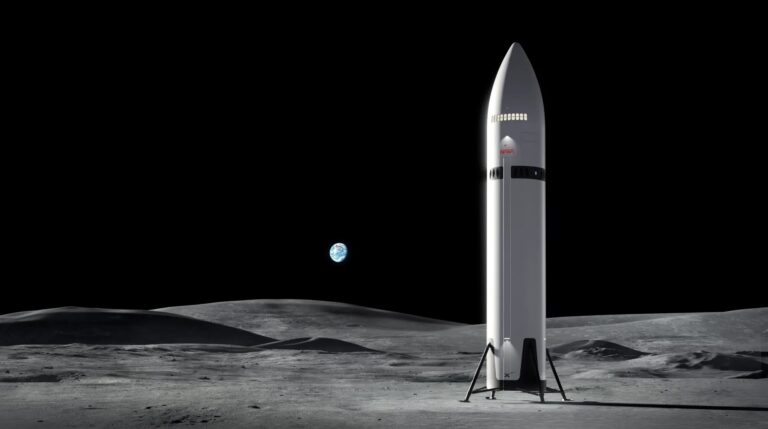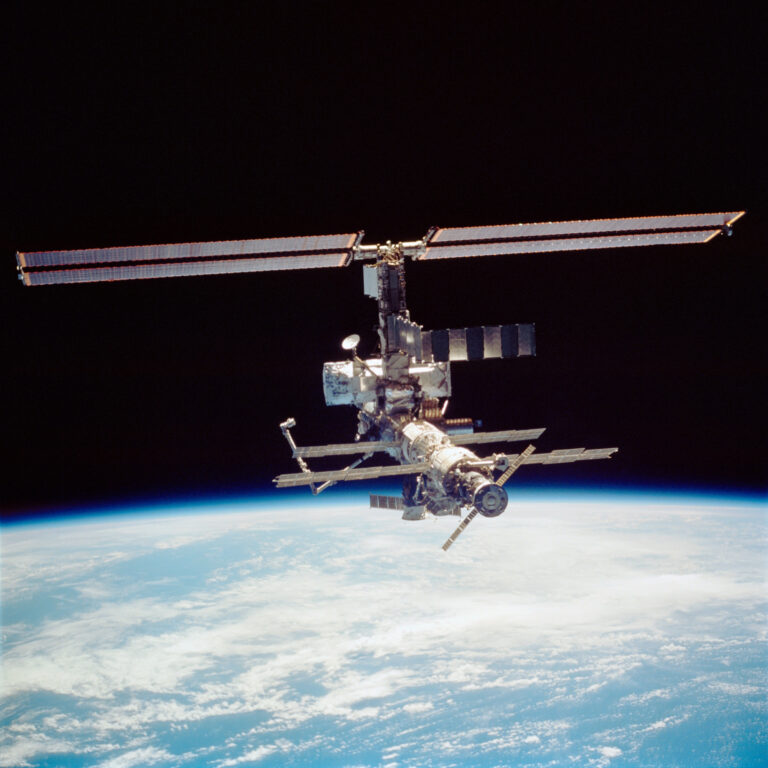Key Takeaways:
Scientists running the High Resolution Imaging Science Experiment, known as HiRISE, on NASA’s Mars Reconnaissance Orbiter have processed more details in an amazing image their camera captured as the Phoenix spacecraft descended through Mars’ atmosphere during its landing on May 25, 2008.
New analysis has turned up what likely is Phoenix’s heat shield falling toward Mars’ surface, they conclude.
HiRISE made history by taking the first image of a spacecraft as it descended toward the surface of another planetary body.
The image shows NASA’s Phoenix Mars Lander when the spacecraft was still tucked inside its aeroshell, suspended from its parachute, at 4:36 P.M. PDT on landing day. Although Phoenix appears to be descending into an impressive impact crater, it actually landed 12 miles (20 kilometers) away.
Mars Reconnaissance Orbiter was about 475 miles (760 km) away when it pointed the HiRISE camera obliquely toward the descending Phoenix lander. The camera viewed through the hazy martian atmosphere at an angle 26° above the horizon when it took the image. The 30-foot (10-meter) wide parachute was fully inflated. Even the lines connecting the parachute and aeroshell are visible, appearing bright against the darker, but fully illuminated martian surface.
In further analyzing the image, the HiRISE team, supported by personnel from NASA’s Jet Propulsion Laboratory and Lockheed Martin Space Systems Co., discovered a small, dark dot located below the lander.
Phoenix was equipped with a heat shield that protected the lander from burning up when it entered Mars’ atmosphere and quickly decelerated because of friction. Phoenix discarded its heat shield after it deployed its parachute.
“Given the timing of the image and of the release of the heat shield, as well as the size and the darkness of the spot compared to any other dark spot in the vicinity, we conclude that HiRISE also captured Phoenix’s heat shield in freefall,” says HiRISE principal investigator Alfred McEwen of the UA’s Lunar and Planetary Laboratory.
The multigigabyte HiRISE image also includes a portion recorded by red, blue-green and infrared detectors, and scientists have processed that color part of the image.
HiRISE’s color bands missed the Phoenix spacecraft but do show frost or ice in the bowl of the relatively recent, 6-mile (10-km) wide impact crater unofficially called Heimdall. The frost shows up as blue in the false-color HiRISE data, and is visible on the right wall within the crater.
The HiRISE camera doesn’t distinguish between carbon dioxide frost and water frost, but another instrument called CRISM on the Mars Reconnaissance Orbiter could.










